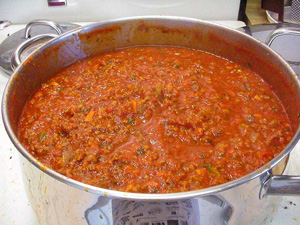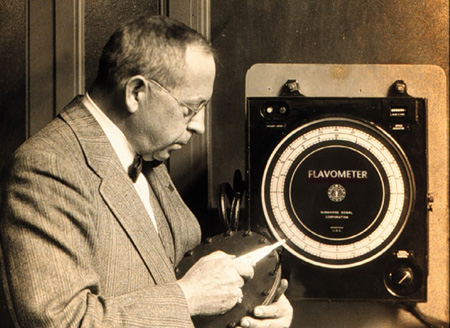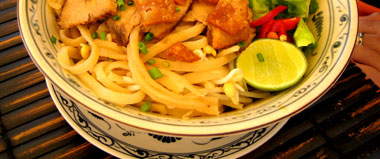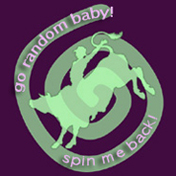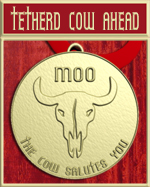A Practical Guide to Obscure Culture for the Discerning Geek
Lesson 1: How To Properly Prepare Absinthe
You will need:
- Genuine Parisian Absinthe
- Sugar cubes
- An absinthe spoon, or flechette
- Filtered water
Here are two kinds of absinthe:


The first bottle is real absinthe. The second bottle is not. What’s the difference? I’m glad you asked. Proper absinthe, or Parisian Absinthe as it is sometimes called, contains a bitter herb called wormwood. It also louches, or turns milky, when water is added. Most importantly it tastes a whole lot better than the second kind (also sometimes called ‘Bohemian’ Absinth and usually made in the Czech Republic), which Phil Baker, in his book The Daedalus Book of Absinthe, likens to windscreen wiper fluid. I don’t know how knowledgeably he makes this comparison, not being a big consumer of automotive cleaning products myself, but I do believe him – it’s fairly unpalatable.
Parisian Absinthe is also a lot more expensive. Of course.
This is a flechette:

This one is a modern copy, but you see antique ones in secondhand shops sometimes. They also appear on eBay (although not nearly as frequently as they used to). If you do find a nice old one, my birthday is coming up soon.
You also need cube sugar:

And no, don’t get too excited. We’re not going to set anything on fire. The fancy spectacle they like to enact in some cocktail bars is hokum. No true absintheur would ever burn off any alcohol. We’re going to do something much better because it’s infinitely more subtle (the kind of absinthe to which people set fire is Bohemian Absinth – there is probably a good reason for that).
Pour about a thumb’s width of absinthe into a small tumbler:
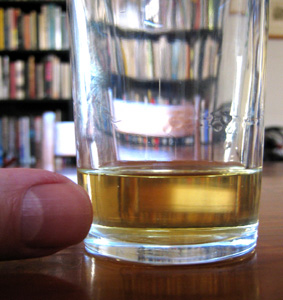
Put the flechette on top of the glass (there is a little ‘resting notch’ in the handle so it won’t slide off), and put the sugar cube on the spoon:
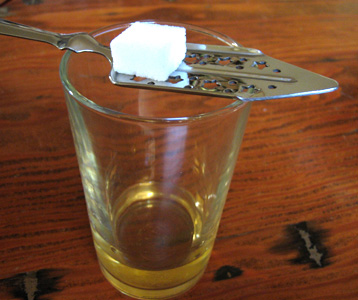
Now, slowly drip filtered water through the sugar cube and into the absinthe (I use a small glass jug to do this). The absinthe will begin to louche as the water hits it. This is a big part of the ritual, and writers and artists have had many poetic things to say about the effect it has. This is what it will look like as it begins to happen, but I’m afraid you’ll have to do it yourself to get any idea of the real magic:

Add water to the absinthe at a ratio of roughly 6:1. This is a matter of taste; some people like it stronger, some people like it milder.
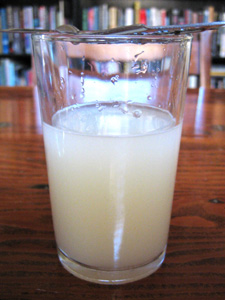
There you have it. That’s the hard bit done, now go and write a Significant Novel, or paint a Masterpiece.
___________________________________________________________________________
Some questions about absinthe answered:
-What does it taste like?
It is sweet and tastes of licorice or anise. It is very similar to Pernod or pastis, to which it is historically related, but with a slight bitterness that offsets the sweetness.
-Isn’t absinthe illegal?
Not in most countries any longer. For various antiquated reasons, it was banned for quite some years.
-Wasn’t that because it had weird hallucinogenic properties and turned everyone into raving lunatics?
No, not really. It’s a long story, but it was essentially banned because of serious problems with alcoholism in Europe in the mid 1800s, and as is often the case with ‘illicit’ substances, much misinformation was bandied about. Some of it stuck for a very long time.
-Hey, but you’re not telling us about thujone, which is a psychoactive ingredient that comes from wormwood…
You’re a bit of a smartypants aren’t you? Yes, absinthe does contain thujone, but in relatively small amounts. To get a pharmacologically meaningful dose you’d have to swill so much absinthe that you’d probably die of liver failure from the alcohol before you started seeing Green Fairies. It is thought that some of the absinthe available in the 19th century contained much greater amounts of wormwood than any brand does now.
-Where can I get some?
It depends where you live. It is available throughout Europe, and now in Australia, but is still illegal in some countries including North-America. Sucks guys. You can order it via numerous vendors online, but a warning: if it is illegal in your country, it will get confiscated by customs if it is declared as absinthe.
-If I visit The Reverend, would he make me a glass?
Always.
___________________________________________________________________________
(Remember to vote for me in the Philosophy Blog War!)
